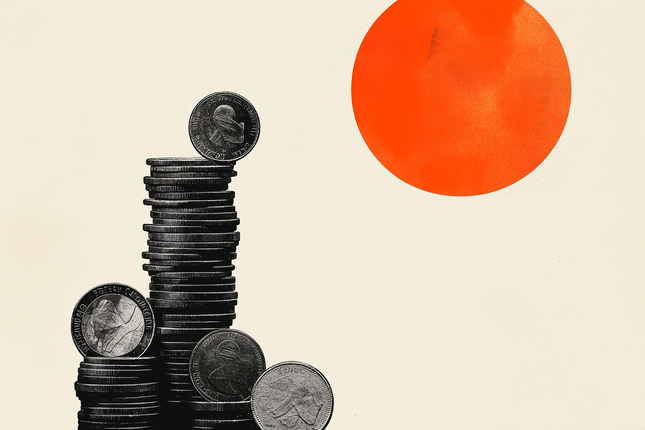AUD/USD Forecast and News
AUD/USD posts fresh yearly high above 0.6700
The AUD/USD pair jumps to near 0.6717 during the European trading session on Wednesday, the highest level seen in over a year. The Aussie pair strengthens as the Australian Dollar outperforms its peers amid expectations that the Reserve Bank of Australia could raise interest rates in 2026 to contain accelerating inflationary pressures.
Latest Australian Dollar News
AUD/USD Technical Overview
AUD/USD trades significantly higher above 0.6700 on Wednesday. The pair holds above the rising 20-week Exponential Moving Average (EMA) at 0.6561, keeping the short-term uptrend intact and favoring higher lows.
The 14-day Relative Strength Index (RSI) at 60.93 (above midline) confirms positive momentum. While price stays over the average, pullbacks would remain contained, and the bias would stay bullish.
Trend conditions remain firm as the 20-week EMA continues to slope upward, with support aligned in an EMA band at 0.6561–0.6546. RSI is yet to reach overbought, leaving room for extension before 70. A weekly close above the round level of 0.6700 would open the door for further upside towards the October 7 high of 0.6810.
Fundamental Overview
RBA hawkish expectations have been prompted after the release of the minutes of the monetary policy on Tuesday, which was announced on December 9, where they discussed raising interest rates next year. “Discussed whether a rate increase might be needed at some point in 2026, as recent data indicated risks to inflation have increased to the upside,” RBA minutes showed.
According to a report from Reuters, swaps now imply just a 27% probability of a rate hike from the RBA in February, but a move has been fully priced by June next year. There is a 56% probability of a follow-up move by the end of 2026.
Meanwhile, a sharp decline in the US Dollar (USD) due to firm expectations that the Federal Reserve (Fed) will cut interest rates by at least 50 basis points (bps) in 2026 has also strengthened the Aussie pair. During the day, the US Dollar Index (DXY), which tracks the Greenback’s value against six major currencies, posts a fresh 11-week low at 97.75.
Latest AUD Analysis
Editors' picks

EUR/USD Price Annual Forecast: Growth to displace central banks from the limelight in 2026 Premium
What a year! Donald Trump’s return to the United States (US) Presidency was no doubt what led financial markets throughout 2025. His not-always-unexpected or surprising decisions shaped investors’ sentiment, or better said, unprecedented uncertainty.

Gold Price Annual Forecast: 2026 could see new record-highs but a 2025-like rally is unlikely Premium
Gold hit multiple new record highs throughout 2025. Trade-war fears, geopolitical instability and monetary easing in major economies were the main drivers behind Gold’s rally.

GBP/USD Price Annual Forecast: Will 2026 be another bullish year for Pound Sterling? Premium
Having wrapped up 2025 on a positive note, the Pound Sterling (GBP) eyes another meaningful and upbeat year against the US Dollar (USD) at the start of 2026.

US Dollar Price Annual Forecast: 2026 set to be a year of transition, not capitulation Premium
The US Dollar (USD) enters the new year at a crossroads. After several years of sustained strength driven by US growth outperformance, aggressive Federal Reserve (Fed) tightening, and recurrent episodes of global risk aversion, the conditions that underpinned broad-based USD appreciation are beginning to erode, but not collapse.

Bitcoin Price Annual Forecast: BTC holds long-term bullish structure heading into 2026
Bitcoin (BTC) is wrapping up 2025 as one of its most eventful years, defined by unprecedented institutional participation, major regulatory developments, and extreme price volatility.
Majors
Cryptocurrencies
Signatures
AUD/USD YEARLY FORECAST
What would happen to the AUD/USD this year? A brief update from our experts on where the AUD/USD can go in the upcoming months.
AUD/USD FORECAST 2025
The battle between the Australian Dollar (AUD) and the US Dollar (USD) will be one worth watching in 2025, with central banks stealing the limelight. The Reserve Bank of Australia (RBA) has kept interest rates at record highs whilst most of its overseas counterparts started the loosening process. The US Federal Reserve (Fed), on the other hand, has trimmed the benchmark interest rate by 100 bps through 2024 and aims to slow the pace of cuts in 2025. The central banks’ imbalance aims for record lows in AUD/USD.
MOST INFLUENTIAL POLITICAL EVENTS IN 2025 FOR AUD/USD
Beyond central banks, market players will be attentive to tariffs. The second coming of Donald Trump to the White House anticipates a global Trade War that could fuel inflationary pressures not only in the United States, but also in all major economies.
Given Trump’s personal battle with China, the Australian economy could end up benefiting from fresh commercial interactions with its neighbour giant.
About AUD/USD
AUD/USD
The AUD/USD currency pair, commonly known as the "Aussie", represents how many US dollars (the quote currency) are needed to purchase one Australian dollar (the base currency). Alongside the New Zealand Dollar (NZD) and the Canadian Dollar (CAD), the AUD is considered a commodity currency due to Australia’s significant exports of raw materials such as precious metals, Oil, and agricultural products.
The Reserve Bank of Australia (RBA) has historically maintained higher interest rates compared to other industrialized nations. Combined with the relatively high liquidity of the AUD, this has made the AUD attractive for carry traders looking for higher yields.
Australia’s economy and currency are closely tied to China, its largest trading partner. Any changes in the Chinese economy can significantly impact the AUD. Additionally, the Australian Dollar is often seen as a diversification tool due to its exposure to Asian economies.
The pair AUD/USD also correlates with Gold prices. Gold is widely viewed as a safe haven asset against inflation and it is one of the most traded commodities.
INFLUENTIAL ORGANIZATIONS AND PEOPLE FOR THE AUD/USD
Reserve Bank of Australia (RBA)
The Reserve Bank of Australia (RBA) is Australia's central bank, deriving its functions and powers from the Reserve Bank Act 1959. Its primary duty is to contribute to currency stability, full employment and the economic prosperity and welfare of the Australian people. The RBA achieves this by setting the cash rate to meet a medium-term inflation target of between 2% and 3%, maintaining a strong financial system and efficient payment infrastructure and issuing the nation's banknotes.
Decisions are made by a board of governors at eight meetings a year and ad hoc emergency meetings as required.
The RBA provides banking services to the Australian Government, its agencies and several overseas central banks and official institutions. Additionally, it manages Australia's gold and foreign exchange reserves.
The official website, on X and YoutubeThe Federal Reserve (Fed)
The Federal Reserve (Fed) is the central bank of the United States (US) and it has two main targets: to maintain the unemployment rate at its lowest possible levels and to keep inflation around 2%. The Federal Reserve System's structure is composed of the presidentially appointed Board of Governors and the partially appointed Federal Open Market Committee (FOMC). The FOMC organizes eight scheduled meetings in a year to review economic and financial conditions. It also determines the appropriate stance of monetary policy and assesses the risks to its long-run goals of price stability and sustainable economic growth. The FOMC Minutes, which are released by the Board of Governors of the Federal Reserve weeks after the latest meeting, are a guide to the future US interest-rate policy.
Fed official website, on X and FacebookMichele Bullock
Michele Bullock is an Australian economist and the current Governor of the Reserve Bank of Australia. She assumed the role in September 2023 and is the first woman to hold the position. She is the Chair of the Reserve Bank Board, Payments System Board and Council of Financial Regulators. Prior to her current role, Bullock was the Deputy Governor of the RBA.
Bullock on her RBA profile and Wikipedia.
Jerome Powell
Jerome Powell took office as chairman of the Board of Governors of the Federal Reserve System in February 2018, for a four-year term ending in February 2022. He was sworn in on May 23, 2022, for a second term as Chairman ending May 15, 2026. Born in Washington D.C., he received a bachelor’s degree in politics from Princeton University in 1975 and earned a law degree from Georgetown University in 1979. Powell served as an assistant secretary and as undersecretary of the Treasury under President George H.W. Bush. He also worked as a lawyer and investment banker in New York City. From 1997 through 2005, Powell was a partner at The Carlyle Group.
Jerome Powell Fed's Profile and Wikipedia.
RBA NEWS & ANALYSIS
FED NEWS & ANALYSIS
ASSETS THAT INFLUENCE AUD/USD THE MOST
- Currencies: The Japanese Yen (JPY) and the Chinese Yuan (CNY), as Japan and China are the most significant trading partners of Australia. Other relevant currency pairs include EUR/USD, GBP/USD, USD/JPY, USD/CHF, NZD/USD and USD/CAD.
- Commodities: The most important is Gold, alongside Iron Ore and Natural Gas.
- Bonds: GACGB10 (Australia 10-year Government Bond Yield), and T-Note 10Y ( 10-year US Treasury note).